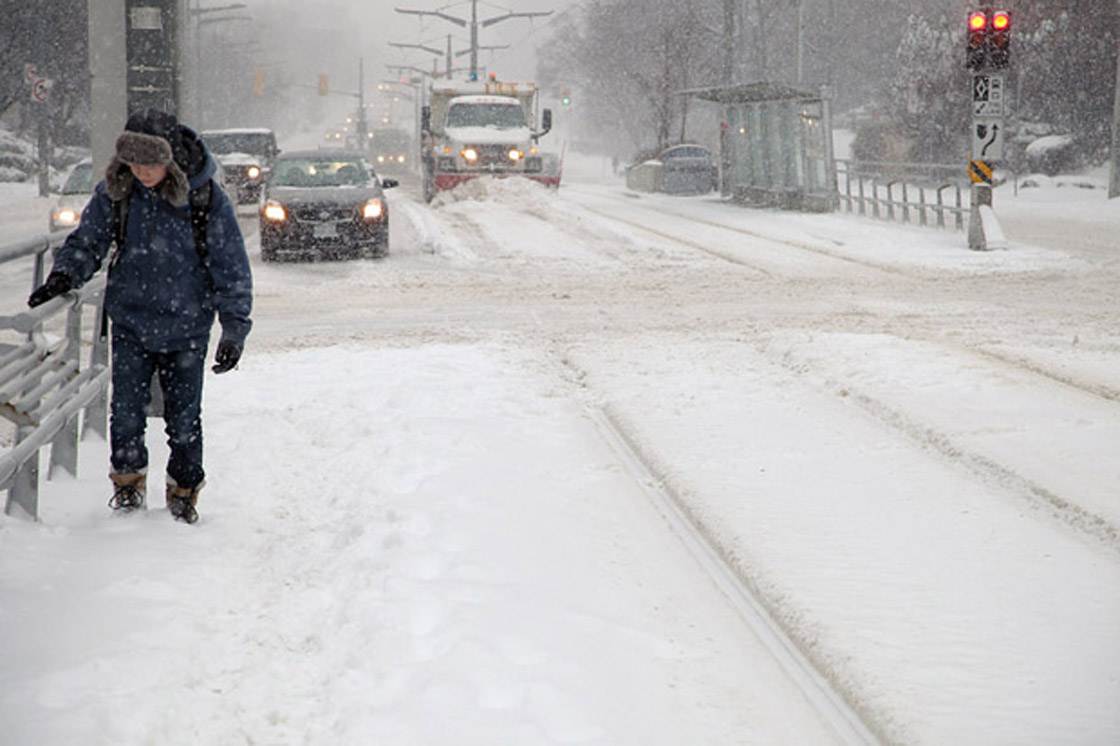TORONTO – If you’re thinking of tackling the snow with a shovel in hand, be careful out there, doctors are warning Canadians.

As a snowstorm pounds eastern Canada, dumping up to 40 centimetres of snow from Ontario to the Maritimes, Canadians are bracing themselves for a weekend of shovelling snow, cleaning off their cars and hiking through the knee-high fluff.
This is the time of year when emergency rooms fill up with weather related injuries – throwing out your back while shovelling, wiping out on the ice and fracturing your hand or even overexerting yourself and triggering a heart attack.
Medical experts see wide range of injuries caused by winter weather
On a snowy winter’s day in 2011, Dr. Adrian Baranchuk saw eight people come into hospital suffering from a heart attack after they had shovelled snow.
“Snow shovelling is a combination of things that aren’t good for you,” he said.
He is a cardiologist At Kingston General Hospital and professor at Queen’s University’s School of Medicine.
Snow shovelling is an isometric activity, like weightlifting. It’s intense, compared to lifting hundreds of pounds over the course of an hour.
- Buzz kill? Gen Z less interested in coffee than older Canadians, survey shows
- Naloxone-resistant street drug linked to 9 deaths in Eastern Canada seized in Alberta
- Bird flu risk to humans an ‘enormous concern,’ WHO says. Here’s what to know
- Canada updating sperm donor screening criteria for men who have sex with men
That causes your blood pressure and heart rate to climb quickly, putting stress on your heart.
Baranchuk points to five factors that increase heart attack risk while shovelling snow:
– It takes place in the morning. Research has also noted that heart attacks are most common in the early part of the day, when hormones and your nervous system are activated.
– It’s anaerobic exercise. It’s high-activity and very strenuous.
– It happens in extreme temperatures. This doesn’t help because your arteries are narrowed by the cold.
– Snow shovellers don’t warm up before they get to work.
– They also don’t take breaks and push themselves to get the job done.
Pair heart health risk with other injuries: sprained ankles and wrists from falling, or hurting your back from slipping on ice.
Scott Allen, a Toronto-based physiotherapist, says his clinic notices a jump in winter weather related incidents.
“It varies, from feeling tension in the body to people literally feeling like they cannot get up for a couple of days,” he said.
The primary incidents he sees are people fracturing their wrists after taking a fall. Then there are people with lower back and shoulder pain from shovelling snow.
Allen’s job is to help deal with back spasms, alignment issues and assess the underlying pain from back injuries.
Should you be shovelling snow in the winter?
This isn’t new to the medical community that has looked at the link between snowy conditions, health and accidents.
Anyone with underlying heart problems shouldn’t be shoveling snow.
Baranchuk’s research at Queen’s University looked at hospital records to see if wintertime patients had higher incidence of heart problems because of shoveling snow.
The scientists suggested that the notion that shoveling snow causes heart attacks is an urban legend. After they looked up 500 patients who came to the hospital with heart problems over two winters, results showed that seven per cent started feeling symptoms while shoveling snow.
“That is a huge number,” Baranchuk said.
“Seven per cent of anything in medicine is a significant proportion,” he said, noting that they also had to take into account some patients who did not mention that they were shoveling snow.
“That number could easily double,” he said.
Meanwhile, a 2009 study by the New England Journal of Medicine study pointed to 11,500 individuals treated for snow shovel-related emergencies.
Sprains and strains made up 55 per cent of diagnoses in this cohort, meanwhile cardiac related incidents made up 6.7 per cent.
How should you safely shovel snow?
Take a look at tips from the Ontario Chiropractic Association’s Lift Light, Shovel Right education campaign.
• Don’t let the snow pile up. Keep your eyes on the weather reports to find out if there will be several days of snow. Frequent shoveling allows you to move smaller amounts of snow at once.
• Pick the right shovel. All shovels are not necessarily the same. Use a lightweight pusher-type of shovel to help protect your back.
• Push, don’t throw. Pushing snow to the side is easier on your muscles. Avoid lifting heavy amounts of snow and sudden twisting movements.
• Bend your knees. Using your knees, legs and arm muscles to do the heavy lifting while keeping your back straight.
• Warm up. Shovelling can be a strenuous activity, so take the time to warm up your muscles with some overall conditioning like walking followed by some stretches.
• Take a break. Listen to your body and stop to take a rest if you feel tired or short of breath. Stop shovelling immediately if you feel chest pain or back pain.



Comments